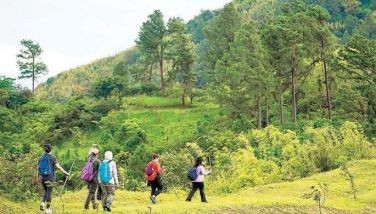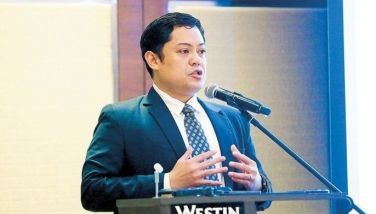The next big one

Rift Valley Fever. Hantavirus. Crimean-Congo Haemorrhagic Fever. Lassa Fever. Malburg. Yellow Fever. H5N1 and H7N9 Influenza. Chikungunya. Ebola. Nipah virus. Another coronavirus.
These are a few of the possible pandemics whose origins are already lurking somewhere in the world waiting for the perfect circumstance for a pathogen to make that jump from usually an animal, in which it lives in, to a human never before infected by the pathogen.
While the last global pandemic scourge before COVID-19 was a century ago, scientists believe that this time, the next big one could be sooner. Just when, though, is something that current procedures – mapping or a comprehensive genetic-sequencing of all organisms carried by wild animals linked to the animals in which they are found – are unable to figure out.
What scientists are sure of is that a new pandemic can begin where there is close contact between people and either domesticated or wild animals. If the pathogen that causes the disease is as contagious as this recent coronavirus, then the whole world will likely stand still again for a number of months until the pandemic is contained.
In the kind of world we live in now, where mobility of people has become much more convenient and faster, a fast-spreading virus like the SARS-CoV2 could easily become the terror that was COVID-19. Coronaviruses have been a known threat to humans since two decades ago, but only succeeded at the end of 2019 to gain its pandemic notoriety in the whole world.
Pandemic treaty
The World Health Organization (WHO), through its health emergencies program, works closely with member countries in the Western Pacific region where a quarter of the world’s population, which includes those in the Philippines, resides.
Through a global governance mechanism called the International Health Regulations (IHR), countries are encouraged to adopt common strategies and policies during major outbreaks and pandemics, even while individual countries have their own programs to manage pandemics.
This explains the variations in the different approaches adopted by member countries, some slightly, others markedly differing. A country, for example, may choose to wait longer before declaring a pandemic or choose wider reaching lockdowns and quarantines over a granular one.
This pandemic has certainly generated a wealth of information that is being collated and dissected to revise the IHR, first published in 2005, and the Asia Pacific Strategy for Emerging Diseases (APSED), last updated in 2015.
The WHO aims to come up with a treaty for the world to strengthen pandemic prevention, preparedness, and response. Understandably, the work will be tedious, starting with getting agreements on how work will be conducted, to timelines, and public hearings.
An intergovernmental negotiating body (INB) established recently will present a progress report to the World Health Assembly (WHA) next year, and hopefully come up with recommendations for approval by the 77th WHA in 2024.
Right approach
Indeed, so much can be improved at mitigating the next pandemic and arriving at the right approach that can prevent not only high infection and death surges, but also the painful contraction of economic life for peoples and nations.
The INB work could provide answers to critical questions on the best way to handle pandemics, even if they are confined only to specific regions rather than the whole world. What approaches are best? Is China doing it better than the rest of world, being perhaps the only country in the world that now still espouses a zero-tolerance to COVID approach?
How does one measure the cost of pandemics? Lockdowns are expensive given the amounts that governments have to pay for the social welfare of the most vulnerable and marginized sectors. Likewise, free vaccinations can add up to a tidy sum that can be burdensome to developing economies.
Lessons gleaned from this pandemic, as well as previous ones like the 2003 SARS outbreak, may help improve early detection and prevention interventions, the cost of which could be much lower than trying to stop the spread of infections through lockdowns.
Vaccine role
Gavi, a global vaccine alliance that played a strategic role in bringing COVID-19 vaccines to developing economies during this current pandemic, openly believes that the best way to prevent future pandemics is through vaccines.
Much of this conviction comes from its experience in handling the spread of Ebola, where Gavi had set up advance purchase commitment mechanisms that assured vaccine manufacturers of getting back their investments in the development of Ebola vaccines.
Gavi now boasts of half a million Ebola vaccine stockpile, which it claims had successfully thwarted outbreaks, the most recent in the Democratic Republic of Congo and nearby countries.
The WHO model is less focused on vaccines, choosing instead to work with developing economies on strengthening their diagnostics and treatment capabilities.
Upgrading crisis response
The Philippines is now confronted with the all-important task of upgrading its public health emergency preparedness given its experience during the first year of the pandemic when both private and government hospitals’ facilities and staff were overwhelmed by a surge in deadly infections.
A command leadership that is better qualified to deal with the pandemic that balances health considerations with economic costs is sorely needed. Linking a health crisis to the current disaster prevention interventions, which is largely focused on emergencies caused by flooding, earthquakes, volcanic eruptions, landslides, or typhoons, should also be considered.
The sooner we come up with the right steps based on lessons learned during the last two years, the better we will be to face the next health emergencies, especially a next big one.
Facebook and Twitter
We are actively using two social networking websites to reach out more often and even interact with and engage our readers, friends and colleagues in the various areas of interest that I tackle in my column. Please like us on www.facebook.com/ReyGamboa and follow us on www.twitter.com/ReyGamboa.
Should you wish to share any insights, write me at Link Edge, 25th Floor, 139 Corporate Center, Valero Street, Salcedo Village, 1227 Makati City. Or e-mail me at [email protected]. For a compilation of previous articles, visit www.BizlinksPhilippines.net.
- Latest
- Trending





























